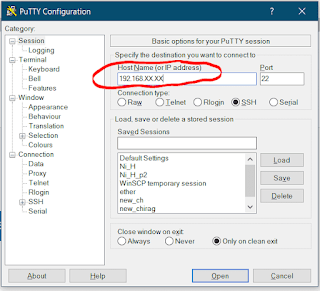4 Step Clear How to do SEO Process in 6month
Search Engine Optimization (SEO) is crucial for boosting your website’s visibility, driving organic traffic, and improving your search engine rankings. The SEO process can seem overwhelming, but breaking it down into manageable steps makes it easier to implement. In this guide, we will walk you through a 4-step clear SEO process to help you achieve tangible results in just six months.
By following this plan, you’ll build a strong foundation and improve your site's overall performance. Let’s get started.
Step 1: Comprehensive SEO Audit & Research (Month 1)
The first month of your SEO process should be dedicated to a comprehensive SEO audit and research. This step allows you to assess your website’s current status and identify areas that need improvement.
- Conduct an SEO Audit: Begin by analyzing your website using tools like Google Search Console, Ahrefs, or SEMrush. Check for broken links, page speed, mobile-friendliness, and indexing issues.
- Keyword Research: The next part of this step is in-depth keyword research. Identify relevant keywords that your target audience is searching for, focusing on a mix of high-traffic and long-tail keywords. Use tools like Google Keyword Planner, Ubersuggest, and Moz to find keywords that align with your niche and business goals.
- Competitor Analysis: Study your competitors’ websites to understand their strategies. Analyze what keywords they rank for, their backlink profile, and how they structure their content. This information will guide your SEO strategy.
By the end of this step, you should have a clear understanding of your site’s strengths and weaknesses and a list of target keywords to focus on in the following months.
Step 2: On-Page SEO Optimization (Month 2-3)
The next phase is on-page optimization, which involves improving your website’s content, structure, and metadata to make it more search-engine-friendly.
- Optimize Content: Update existing content by integrating the target keywords discovered in Step 1. Ensure your pages provide valuable information to the users while naturally incorporating keywords. Avoid keyword stuffing, as search engines penalize this.
- Improve Meta Tags: Focus on optimizing meta titles, meta descriptions, and header tags (H1, H2, etc.). Each page’s title should be unique, descriptive, and include a relevant keyword.
- Internal Linking: Create a solid internal linking structure that helps both users and search engines navigate your site. Link from high-authority pages to newer or less authoritative ones, helping distribute link equity throughout the site.
- Image Optimization: Ensure that your images are properly optimized by compressing file sizes and adding alt tags that describe the image content and include relevant keywords.
- URL Structure: Clean up your website’s URL structure by making sure that URLs are short, descriptive, and contain target keywords.
Implementing these on-page SEO tactics will help improve your site’s relevance and ranking for your chosen keywords, setting you up for long-term success.
Step 3: Off-Page SEO & Link Building (Month 4-5)
Off-page SEO focuses on building your website’s authority and credibility through external efforts like backlinks.
- Build Quality Backlinks: Start reaching out to high-authority websites for guest posting opportunities, link exchanges, or mentions. Focus on obtaining backlinks from relevant, high-domain authority websites to enhance your site’s credibility.
- Social Media Engagement: Use social media platforms to share your content and engage with your audience. Although social media does not directly impact search rankings, it can drive traffic to your site, which indirectly improves your SEO.
- Influencer Outreach: Partner with influencers or bloggers in your niche to get backlinks, mentions, or promotions for your website. Influencer marketing is a powerful tool to improve your online presence.
- Monitor Backlinks: Use tools like Ahrefs or Majestic to track your backlinks and ensure they are from reputable sources. Remove or disavow toxic or low-quality backlinks that could hurt your rankings.
Building a strong backlink profile increases your website’s authority, which is essential for improving search rankings.
Step 4: Monitor, Measure, and Adjust (Month 6)
In the final month of your six-month SEO process, it’s time to monitor your progress, analyze data, and adjust your strategy.
- Track Progress: Use tools like Google Analytics and Google Search Console to track your website's traffic, bounce rates, and keyword rankings. Compare your current performance with the baseline metrics you set in the first month.
- Adjust Strategy: Based on the data you gather, make necessary adjustments to your SEO strategy. If certain keywords aren’t driving the desired traffic, tweak your content or consider targeting new ones.
- Keep Up with SEO Trends: SEO is constantly evolving, so stay informed about the latest algorithm updates and industry trends. Continuously optimizing your content and strategies is key to long-term success.
By following this 4-step SEO process, you’ll build a solid foundation that will improve your site’s visibility and rankings over six months. The key to success is consistency—stay on top of these tasks to see lasting results in your SEO efforts.


.png)
Comments